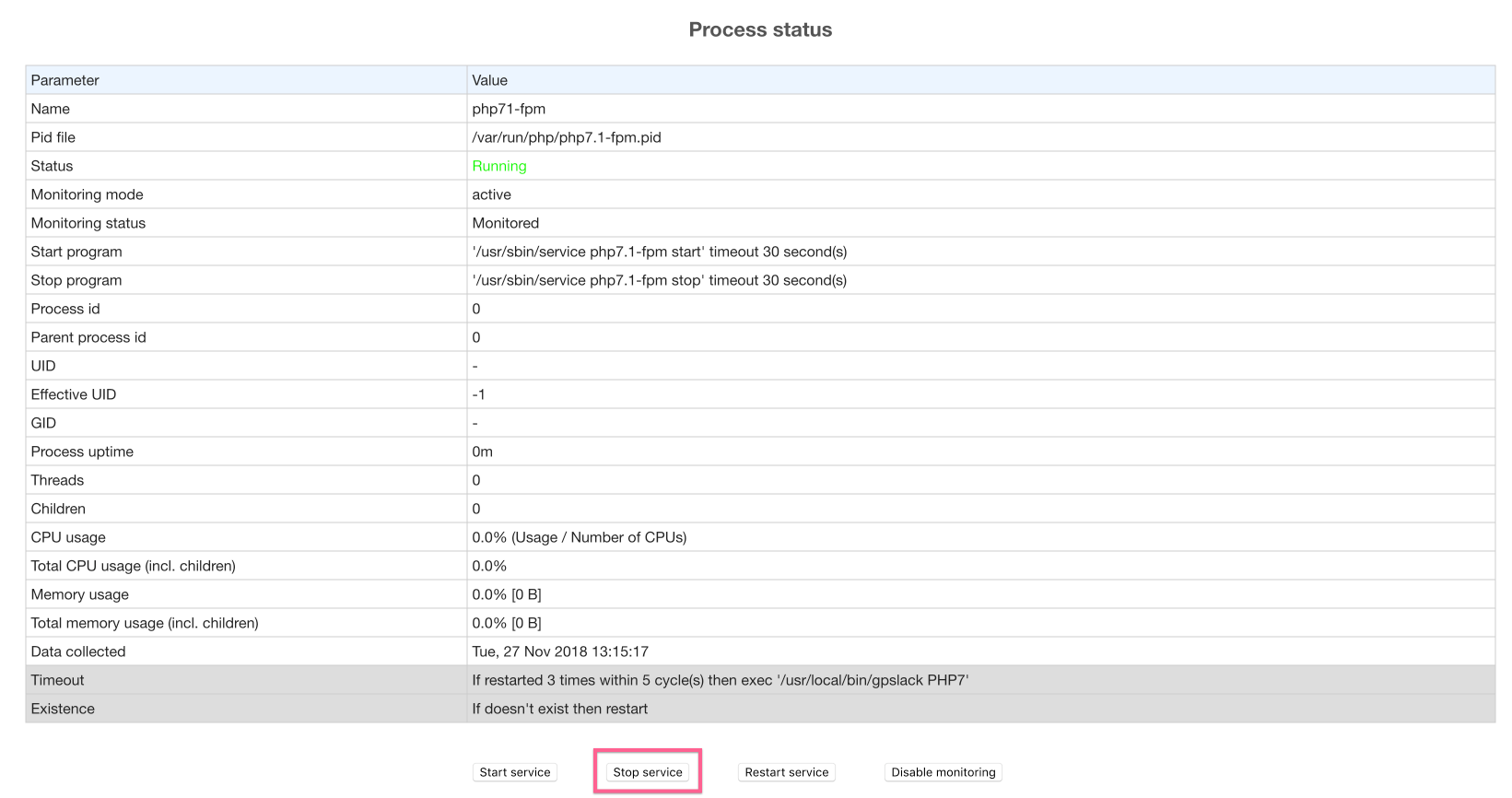

You should see something like Figure 1 (below).Ĭlick on the system name to see more statistics, including memory, CPU, and uptime. Open a Web browser to The default login is admin, monit, which is configured in /etc/monit/monitrc. If you see the message “/etc/monit/monitrc:289: Include failed - Success ‘/etc/monit/conf.d/*'” that is a bug, and you can safely ignore it. Start Monit, and then use its command-line status checker: Uncomment these lines in /etc/monit/monitrc: The coolest feature is you can monitor any service, and you will see why in the configuration examples.

It works best as a single-host monitor, but it can also monitor remote services, which is useful when local services depend on them, such as database or file servers. Monit is a good choice when you’re managing just a few machines, and don’t want to hassle with the complexity of something like Nagios or Chef. You may use Monit to monitor files, directories and filesystems for changes, such as timestamps changes, checksum changes or size changes. Monit can start a process if it does not run, restart a process if it does not respond and stop a process if it uses too much resources. Monit conducts automatic maintenance and repair and can execute meaningful causal actions in error situations. To quote man monit: monit is a utility for managing and monitoring processes, files, directories and filesystems on a Unix system. Monit is my favorite, because provides the perfect blend of simplicity and functionality. Monit monitors and manages any service, and Supervisor is a nice tool for managing persistent scripts and commands without having to write init scripts for them. apachetop is a simple real-time Apache monitor. They’re all small and fairly simple to use. We’re going to look at my three favorite service monitors: Apachetop, Monit, and Supervisor. Most release job only start a single process.The Linux world abounds in monitoring apps of all kinds. This is how you can tell which processes belong to which release job. var/vcap/jobs/redis-server/monit) with final monit configuration for that release job. Each release job directory contains a monit file (e.g. Before you can run the command you have to switch to become a root user (via sudo su) since Monit executable is only available to root users.Įach enabled release job has its own directory in /var/vcap/jobs/ directory. On any BOSH managed VM, you can access Monit status for release jobs' processes via Monit CLI. To determine what the problem is with a specific VM, you can ssh into the VM and look at the logs and/or Monit directly. Unresponsive: the Director did not receive any response from the Agent Starting state indicates that one or more of the release jobs' processes are being started and may not yet be running. Starting: the Director received a response from the Agent and the Agent reported its aggregate status as starting. Failing state indicatates one or more of the release jobs' processes is not successfully running (could be failing to start, or exiting after some time, or still in the process of becoming healthy, etc.). Running state indicates that all release jobs' processes are successfully running at that moment.įailing: the Director received a response from the Agent and the Agent reported its aggregate status as not successful. Running: the Director received a response from the Agent and the Agent reported its aggregate status as successful. There are several typical values for State:

| Instance | State | Resource Pool | IPs | Recovery from a vSphere Network Partitioning Fault Director SSL Certificate Configuration with OpenSSL


 0 kommentar(er)
0 kommentar(er)
